Eastern Wild Turkey
- February 22, 2024
- 0 comment
The Eastern Wild Turkey, a native inhabitant of North America, holds a special place in both ecological and cultural landscapes. With its striking plumage and fascinating behavior, this iconic bird captivates the imagination of wildlife enthusiasts and researchers alike. Found predominantly in the Eastern United States and extending into parts of Canada, Eastern Wild Turkeys thrive in diverse habitats ranging from dense forests to open fields. Characterized by their iridescent feathers showcasing hues of bronze, copper, and green, these turkeys boast impressive physical characteristics, with adult males featuring prominent beards and colorful tail feathers.
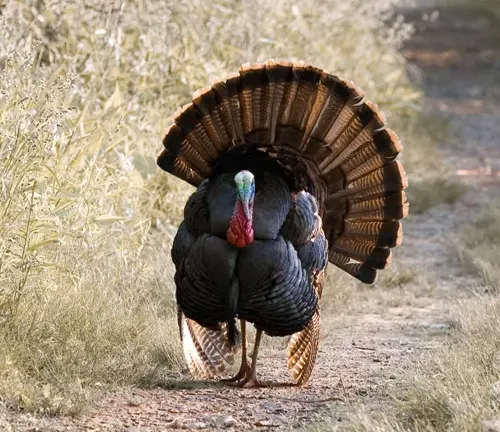
Their social structure is intricate, forming hierarchical flocks led by dominant males, while communication is facilitated through a range of vocalizations. Breeding season brings about elaborate courtship displays, with hens meticulously crafting ground nests to safeguard their eggs. Omnivorous in diet, Eastern Wild Turkeys play a vital role in ecosystem dynamics, serving as seed dispersers, insect predators, and prey species for carnivores. However, they face numerous threats including habitat loss, hunting pressure, and predation. Conservation efforts aimed at restoring and conserving turkey populations are underway, emphasizing habitat preservation, regulated hunting practices, and public education.
Beyond their ecological importance, Eastern Wild Turkeys hold cultural significance, featuring prominently in folklore, art, and traditional ceremonies throughout history. As ambassadors of North America’s wilderness, understanding and conserving these majestic birds is essential for preserving our natural heritage for future generations.
| Category | Description |
|---|---|
| Scientific Name | Meleagris gallopavo silvestris |
| Average Weight (Adult) | Toms: 18-24 pounds; Hens: 8-12 pounds |
| Average Wingspan | 4.5-5.5 feet |
| Plumage Colors | Iridescent feathers with shades of bronze, copper, and green |
| Prominent Features | Toms have beard-like feathers on their chest; Males have colorful tail feathers; Spurs on legs |
| Habitat | Diverse habitats including forests, woodlands, and open fields |
| Distribution | Eastern United States and parts of Canada |
| Social Structure | Hierarchical flocks led by dominant males; Communication through vocalizations |
| Breeding Season | Spring |
| Nesting Habits | Ground nests concealed in dense vegetation; Clutch size: 8-15 eggs |
| Diet | Omnivorous; Seeds, fruits, insects, small vertebrates |
| Predators | Foxes, coyotes, birds of prey |
| Threats | Habitat loss, hunting, predation, disease |
| Conservation Status | Stable with regulated hunting programs; Conservation efforts focus on habitat preservation |
| Cultural Significance | Prominent in folklore, art, traditional ceremonies; Symbol of abundance and freedom |
| Ecological Importance | Seed dispersers, insect predators, prey species for carnivores |
Exploring North America’s Iconic Bird
The Eastern Wild Turkey, a fascinating native species of North America, captivates with its beauty, behavior, and ecological significance. Here, we delve into the world of Eastern Wild Turkeys, uncovering their habitat, behavior, conservation efforts, and more.
The Eastern Wild Turkey stands as a symbol of the continent’s wilderness, with its majestic presence and vibrant plumage. This article aims to provide insights into this iconic bird’s life, habitat, and conservation status.
Habitat and Distribution
Habitat
Eastern Wild Turkeys inhabit a diverse range of habitats across the Eastern United States and parts of Canada. They are commonly found in wooded areas, including forests, woodlands, and mixed hardwood stands. Additionally, they thrive in habitats with a combination of open fields, grasslands, and brushy areas, providing ample foraging opportunities.

These turkeys also occupy agricultural landscapes, where they can find food resources such as grains, seeds, and insects in fields and pastures. They are adaptable birds, capable of utilizing various habitat types as long as there is suitable cover for nesting and roosting, as well as access to food and water sources.

Distribution
The Eastern Wild Turkey’s range extends from the northeastern United States, including states like Maine and Vermont, down to the southeastern states such as Florida and Georgia. They are also found in the Midwestern states like Ohio, Indiana, and Illinois. In Canada, Eastern Wild Turkeys are present in provinces such as Ontario and Quebec.
Within their range, Eastern Wild Turkeys may exhibit localized distributions based on factors such as habitat availability, climate, and human activities. Efforts to reintroduce and expand turkey populations in certain areas have led to range expansions and population increases in recent years.
Physical Characteristics
The Eastern Wild Turkey is characterized by several distinctive physical features that contribute to its unique appearance and identity:
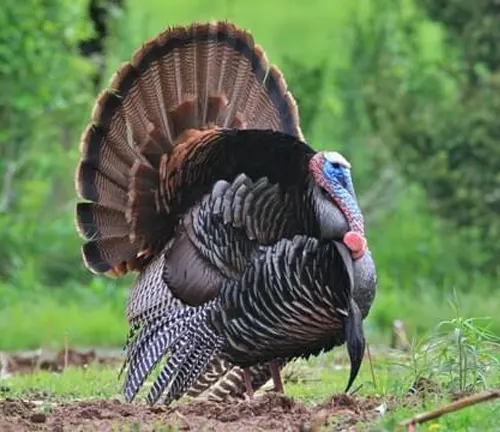

- Plumage: Eastern Wild Turkeys have iridescent feathers that display a range of colors including bronze, copper, and green. This plumage is particularly vibrant in sunlight, giving the bird a striking and beautiful appearance.
- Sexual Dimorphism: There is noticeable sexual dimorphism within the species, with adult males (toms) generally larger and more colorful than females (hens). Toms typically exhibit more prominent iridescence and may have longer beard-like feathers on their chest.
- Beard: One of the most recognizable features of male Eastern Wild Turkeys is the beard, a cluster of modified feathers protruding from the chest. The beard can vary in length and is used in courtship displays.
- Tail Feathers: Adult males also have colorful tail feathers, which they fan out and display during courtship rituals. These feathers often feature distinct patterns and can contribute to the tom’s overall attractiveness to potential mates.
- Wattle and Caruncles: Both male and female Eastern Wild Turkeys have fleshy, red or blue-colored skin flaps known as wattles and caruncles on their heads and necks. These structures may become more pronounced during periods of excitement or mating displays.
- Spurs: Adult male turkeys develop spurs on their legs, which are sharp, bony protrusions used for defense and dominance displays during interactions with other turkeys.
- Size: Eastern Wild Turkeys are relatively large birds, with adult males typically weighing between 18-24 pounds and females ranging from 8-12 pounds. They have a wingspan of 4.5-5.5 feet, making them formidable flyers when needed.
Behavior and Social Structure
Here are the three most important behaviors and aspects of social structure in Eastern Wild Turkeys


- Flocking Behavior: The formation of hierarchical flocks is crucial for Eastern Wild Turkeys’ survival and social interactions. These flocks provide protection against predators, facilitate mating opportunities, and allow for the sharing of resources such as food and roosting sites. Understanding flock dynamics helps researchers and conservationists manage turkey populations and monitor their health and behavior.
- Communication: Communication plays a vital role in Eastern Wild Turkeys’ social interactions, mating rituals, and territorial defense. Vocalizations such as the gobble, clucks, and purrs are used to establish dominance, attract mates, and maintain cohesion within flocks. Body language, including strutting displays and aggressive postures, also communicates dominance and submission among individuals. Studying turkey communication helps researchers decipher their social hierarchy and reproductive strategies.
- Courtship Displays: Courtship displays are essential for Eastern Wild Turkeys’ mating rituals and reproductive success. During the breeding season, male turkeys engage in elaborate displays to court females, including puffing up their plumage, fanning out their tail feathers, and emitting vocalizations. These displays not only attract potential mates but also allow females to assess the health and vigor of potential partners. Understanding courtship behavior aids in the study of turkey breeding ecology and population dynamics, informing conservation efforts and management strategies.
Reproduction and Nesting
Breeding season, occurring in spring, is marked by elaborate courtship rituals where males display their plumage and perform mating dances. Hens construct ground nests concealed in dense vegetation to protect their eggs from predators.
Breeding Season
Eastern Wild Turkeys typically breed during the spring months, with mating activity peaking in April and May. This period, known as the breeding season or the mating season, is marked by increased vocalizations, courtship displays, and mating rituals among individuals.
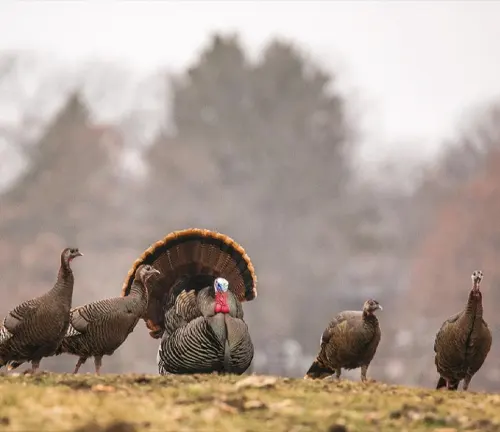
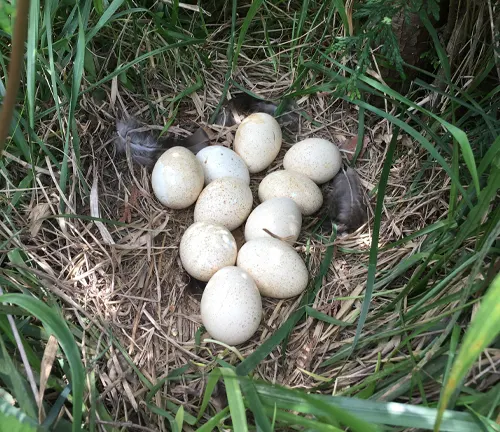
Nest Construction
Female Eastern Wild Turkeys, known as hens, construct ground nests to lay their eggs. These nests are typically located in concealed areas within dense vegetation, such as tall grass or brushy undergrowth. The hen carefully arranges leaves, grass, and other materials to create a shallow depression where she lays her clutch of eggs.
Incubation and Hatching
Once the eggs are laid, the hen incubates them for approximately 25-28 days until they hatch. During this incubation period, the hen remains on the nest, rarely leaving except to feed briefly nearby. After hatching, the young turkeys, called poults, are precocial and capable of walking and foraging shortly after birth. The hen leads them away from the nest site to search for food and provides protection from predators until they are independent. Understanding the reproductive biology of Eastern Wild Turkeys helps researchers monitor population dynamics, assess nesting success, and implement conservation measures to support breeding efforts.

Diet and Feeding Habits
Eastern Wild Turkeys have an omnivorous diet, consuming a variety of foods such as seeds, fruits, insects, and small vertebrates. Their sharp eyesight and keen foraging skills aid in locating food sources within their habitat.

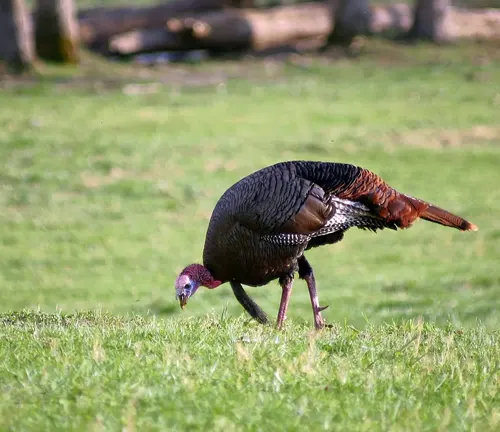
- Omnivorous Diet: Eastern Wild Turkeys have an omnivorous diet, meaning they consume a variety of plant and animal matter. Their diet includes seeds, nuts, fruits, berries, insects, small invertebrates, and occasionally small vertebrates like amphibians or reptiles. This diverse diet allows them to adapt to different food sources based on seasonal availability and habitat conditions.
- Foraging Behavior: Eastern Wild Turkeys are opportunistic foragers, using their keen eyesight and sense of smell to locate food sources on the forest floor. They scratch at leaf litter and soil with their feet, searching for seeds, insects, and other edible items hidden beneath the surface. Turkeys may also browse on vegetation, pecking at leaves, grasses, and tender shoots for additional nutrients.
- Feeding Patterns: Eastern Wild Turkeys are most active during the early morning and late afternoon hours, known as crepuscular periods, when they forage for food. They may also feed opportunistically throughout the day, especially during periods of high food availability or when raising young poults. Understanding the dietary preferences and feeding behaviors of Eastern Wild Turkeys helps researchers assess habitat quality, identify important food resources, and develop conservation strategies to support healthy turkey populations.
Predators and Threats
Predators and threats play significant roles in the ecology and survival of Eastern Wild Turkeys. Here are the key predators and threats faced by these birds:
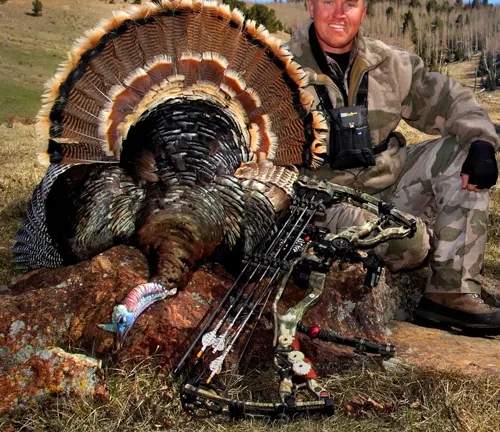
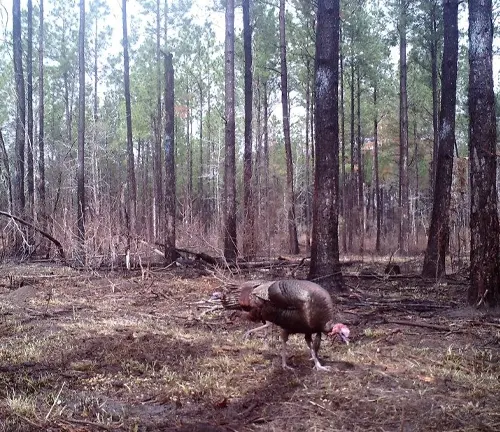
- Natural Predators: Eastern Wild Turkeys face predation from a variety of natural predators, including mammals such as foxes, coyotes, bobcats, raccoons, and opossums. These predators often target turkey nests to consume eggs or young poults. Additionally, birds of prey such as hawks and owls may prey on juvenile or injured turkeys.
- Human Hunting: Hunting is a significant threat to Eastern Wild Turkey populations, particularly in areas where hunting pressure is high and regulations may be insufficiently enforced. While regulated hunting programs can help manage turkey populations sustainably, illegal poaching and overharvesting can negatively impact population numbers and genetic diversity.
- Habitat Loss and Fragmentation: Habitat loss and fragmentation due to urbanization, agricultural expansion, and land development pose serious threats to Eastern Wild Turkeys. Loss of forested habitats and conversion of natural landscapes into human-dominated areas reduce suitable nesting sites, foraging areas, and roosting habitat for turkeys, leading to population declines and increased susceptibility to predation and other threats.
- Disease and Parasites: Eastern Wild Turkeys are susceptible to various diseases and parasites, including avian pox, avian influenza, and parasites such as ticks and mites. Outbreaks of disease can have devastating effects on turkey populations, causing mortality and reducing reproductive success.
- Climate Change: Climate change poses indirect threats to Eastern Wild Turkeys by altering habitat suitability, disrupting seasonal behaviors such as breeding and migration, and increasing the frequency and severity of extreme weather events. Changes in temperature and precipitation patterns can affect food availability, nesting success, and overall population health.
Tips for Observing Eastern Wild Turkeys
For wildlife enthusiasts eager to observe Eastern Wild Turkeys in their natural habitat, patience, respect, and discretion are key. Choosing appropriate locations, avoiding disturbance, and using binoculars or cameras can enhance the viewing experience while minimizing stress on the birds.
Different Species
Eastern Wild Turkey
(Meleagris gallopavo silvestris)
This is the most widespread subspecies, found throughout the Eastern United States and parts of Canada. It is characterized by its vibrant plumage and is the focus of conservation efforts and hunting programs.


Osceola Wild Turkey
(Meleagris gallopavo osceola)
Also known as the Florida Wild Turkey, this subspecies is native to the Florida peninsula. It is slightly smaller than the Eastern Wild Turkey and has darker plumage, often with less iridescence.
Rio Grande Wild Turkey
(Meleagris gallopavo intermedia)
Found primarily in Texas, Oklahoma, Kansas, and parts of New Mexico, the Rio Grande Wild Turkey is known for its adaptability to open grasslands and brushy areas. It typically has lighter plumage than the Eastern Wild Turkey.
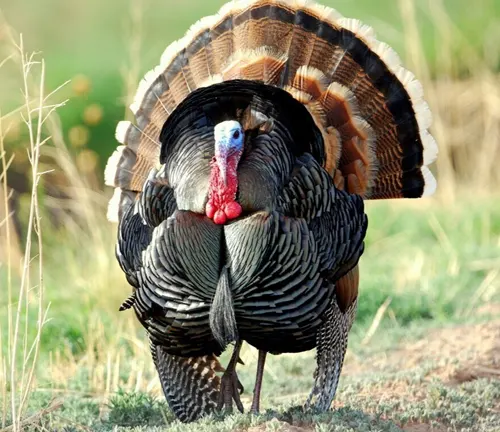
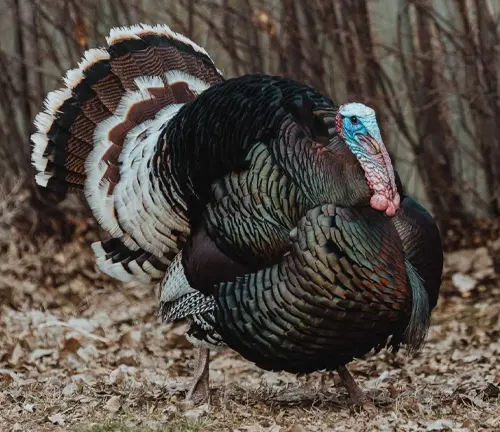
Merriam’s Wild Turkey
(Meleagris gallopavo merriami)
Inhabiting the mountainous regions of the western United States, particularly in the Rockies and Sierra Nevada, Merriam’s Wild Turkey has pale plumage with white tips on its tail feathers. It prefers higher elevations and coniferous forests.
Gould’s Wild Turkey
(Meleagris gallopavo mexicana)
Native to northern Mexico and limited parts of the southwestern United States, including Arizona and New Mexico, Gould’s Wild Turkey is the largest of all wild turkey subspecies. It has vibrant plumage with distinct white tips on its tail feathers.
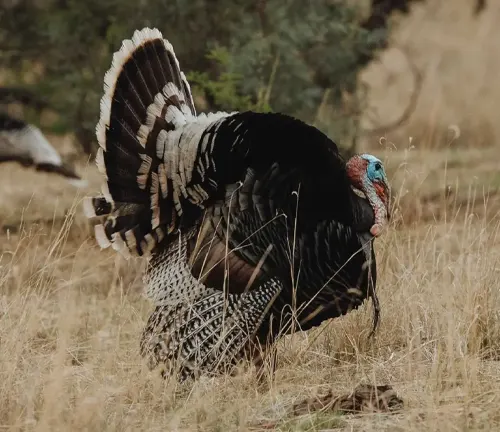
Frequently Asked Questions (FAQs)
- What is the Eastern Wild Turkey?
The Eastern Wild Turkey (Meleagris gallopavo silvestris) is a native bird species of North America, known for its vibrant plumage and cultural significance. - Where can Eastern Wild Turkeys be found?
Eastern Wild Turkeys are primarily found in the Eastern United States, ranging from Maine to Florida and extending into parts of Canada. - What do Eastern Wild Turkeys eat?
Eastern Wild Turkeys have an omnivorous diet, consuming a variety of foods such as seeds, fruits, insects, and small vertebrates. - What are the predators of Eastern Wild Turkeys?
Predators of Eastern Wild Turkeys include foxes, coyotes, birds of prey, and other carnivorous mammals. - Are Eastern Wild Turkeys endangered?
While Eastern Wild Turkeys face threats from habitat loss and hunting, conservation efforts have helped stabilize populations, and they are not currently considered endangered. - How do Eastern Wild Turkeys communicate?
Eastern Wild Turkeys communicate through a range of vocalizations, including gobbles, clucks, purrs, and drumming sounds. - When is breeding season for Eastern Wild Turkeys?
Breeding season for Eastern Wild Turkeys typically occurs in the spring, marked by elaborate courtship displays and mating rituals. - What is the lifespan of Eastern Wild Turkeys?
In the wild, Eastern Wild Turkeys have an average lifespan of 3 to 5 years, although some individuals may live longer. - Do Eastern Wild Turkeys migrate?
Eastern Wild Turkeys are generally non-migratory, although they may exhibit seasonal movements in search of food and suitable habitat. - Are Eastern Wild Turkeys hunted?
Yes, Eastern Wild Turkeys are a popular game species and are hunted legally during regulated hunting seasons in many states.


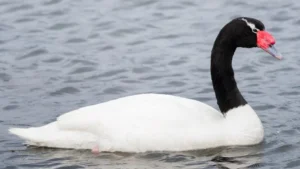

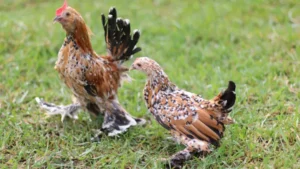
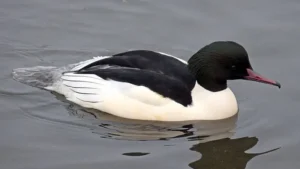

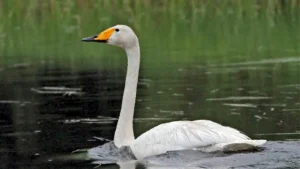
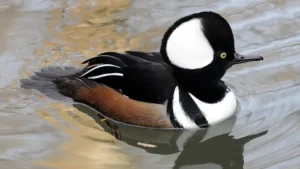

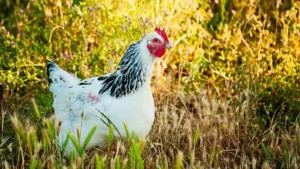
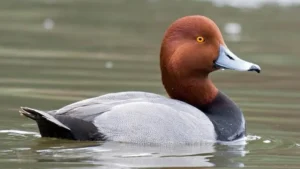

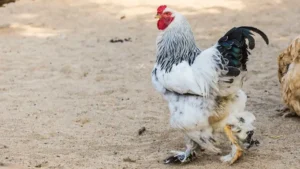
Leave your comment